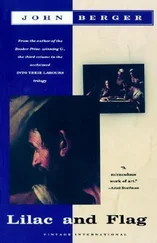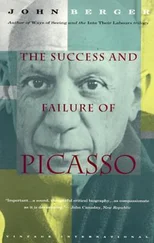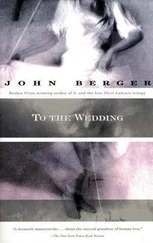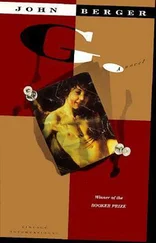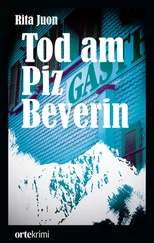
It looked like this. Its stone was whitish, marked with blue. It was a man’s size. It was too large for me if I put my foot on it. The first time I saw it, I tried to pick it up to compare it with the pair of sabots, made from walnut wood, which were at the bottom of the wardrobe. The man who made the wardrobe took a winter making it and my great-grandfather paid him by cutting stones for his new house. The man’s initials were A.B . and my great-grandfather carved these above the door to his house. I had seen them. When he was young, A.B. cracked many jokes. Later he was much given to thought, and finally he killed himself in the new house with his initials above the door. When I tried to pick up the sabot, I could not move it.
“Pépé, why is there a stone sabot in the courtyard?” I asked my grandfather. He was my authority about everything which was mysterious. It was several months before he answered my question.
One evening, he told me, his father, my great-grandfather, came through the door from the stable into the kitchen — the same kitchen in which we lived — and announced: “Néra has put my eye out.” “Aiee!” screamed his wife, but when she looked at him she said, “No, your eye is not out.” He had very blue eyes. “She butted me,” he insisted, “as I was feeding her.”
Pépé looked into his father’s face. Miserably and terribly during the next five minutes one of his blue eyes turned entirely red, blood red, and he never saw out of it again. Nor did he ever recover from the shock of losing this eye. He believed himself repulsively disfigured.
Glass eyes were not easy to find. One day a friend drove by cart to A … and there in a barber’s shop he found a whole bottle of them. “Give me the bluest you have,” said the friend. Pépé’s father would not wear it. Instead, Pépé, who was the youngest of three sons and his father’s favourite, had to walk in front of him whenever he went out, to warn those they met not to look into his father’s eyes.
One year later Pépé announced to the family that he was leaving. He was going to Paris. The family could not live off four cows. His brothers did not argue with him, for it was either him or one of them who had to go. He was fifteen at the time. His father ordered him to stay at home.
As he was packing his bundle, he found a pair of his father’s boots. They were the newest and strongest boots in the house, and he put them on. His father was working in a circle of rocks above the house. He climbed the slope to embrace him. Then he pointed to the boots on his feet, and, as he was running down, he shouted: “The good ones are going! The bad ones are staying!”
In Paris he worked for several years without returning. The last job he had was on the building site of Le Grand Palais, which was to house the world exhibition to celebrate the opening of the century.
Whilst he was absent, his father, peering out of one eye, cut the stone cross and headstone for his own grave. On it he carved his name and added the date of his birth, 1840, the year that Napoleon’s body was transferred from St Helena to the Invalides. Then he carved the supposed date of his death. The latter proved correct, for he died before the year was out. I passed the grave in the cemetery. And the date of Napoleon’s home-coming I learnt at school.
When Pépé came back from Paris he found the stone sabot in the courtyard. He said his dead father had put it there as a sign that he had forgiven him for taking the boots.
That was all.
“How do you know your father forgave you?” I asked him after a long while.
“Nobody can take the stone sabot,” he explained. “It’s fixed to the rock. It’ll outlast the house. And that is what is important. The boots I took were unimportant. He wanted me to know that.”
The way Pépé told me this story made me think he had never told it to anybody else. His telling me was a privilege. I kept the stone sabot clear of snow because I recognised this. Whenever he saw me bent over the sabot, he smiled.
The Sundays passed. We became vague about the date. In limbo one loses a sense of time. My mother kept on repeating, “He has served us some more!” Repeatedly we cleared the courtyard. The pile of snow in the corner grew and became as high as a room. Every day two pairs of crows perched on top of the same apple trees. My grandmother hated them because they tried to eat the grain she gave her chickens. Pépé claimed that one of the crows was older than he: “I’d give a lot,” he mumbled, “to see all that he has seen — the fights, the legal battles, the zouaves, the inventions, the couples in the forest …”
One evening in January my grandfather took the decision. “Tomorrow,” he said, “we are going to kill the pig.” On the day we killed the pig everybody had a job to do. And from that day onwards we knew that, however distant it still was, the spring was approaching. The mornings would get lighter. Not regularly, but when there were no clouds in the sky.
I went with my grandfather to look at the pig.
“He’s as long as a pew,” said Pépé with pride.
“He’s bigger than last year’s,” I said, wanting to share in the pride.
“He’s the biggest I remember. It’s all those potatoes Mémé feeds him. She’d feed him her own dinner if she had to.”
He ran his hand along the length of the pig’s back, as if celebrating the virtues of my grandmother.
Mémé had found it difficult to make up her mind whether to marry Pépé or not. There was a photograph of the wedding in their bedroom. With the money he had saved whilst working in Paris, he had bought out his brothers, and the family farm became his. In the wedding photograph their two faces were unlined and round like apples. Even in the wedding photograph Pépé looked cunning. He had the eyes of a fox, watchful, canny, with a fire in their darkness. Perhaps it was the look in his eyes which made her hesitate.
Pépé confided to his friend Marius that Mémé couldn’t make up her mind whether or not to marry him. After the story of the stone sabot, he told me many stories of his life. The two friends planned a practical joke. Exactly that. A joke that would prove useful.
On the Sunday before Easter, Pépé suggested to his sweetheart that they take a walk together through the forest. By that time the violets and white wood anemones are out. One day it may be warm enough to undress; the next it can snow. The afternoon of their walk it was cold. He led her to a disused chapel where, inside, they were protected from the wind. He kissed her and put his hand on her breast. “The chapel was not consecrated,” he said to me gravely. She started to undo her blouse. He didn’t say this to me. He said: “I began to caress her.” I pictured the breasts to myself when he told me the story.
Suddenly they heard a key turn in the door and the bell above the roof began to ring a tocsin: the peal used to warn people against fire, or to keep lightning away in a storm. The couple were trapped there in the chapel. Pépé pretended to look for a way out. My grandmother adjusted her chemise, pushed him towards the door and clung to his back. She was convinced that they had been caught by robbers, and could scarcely hear what he said for the noise of the bell.
The neighbours came running through the forest and saw Marius astride the roof of the chapel ringing the bell like a madman. They shouted to him but he couldn’t hear. All they could see was that he was either crying or laughing. When he climbed down he solemnly put his finger to his lips and opened the chapel door. When the couple came out, he said: “There are two things nobody can hide — a cough and love!” Next Sunday the banns for their marriage were announced.
Читать дальше


